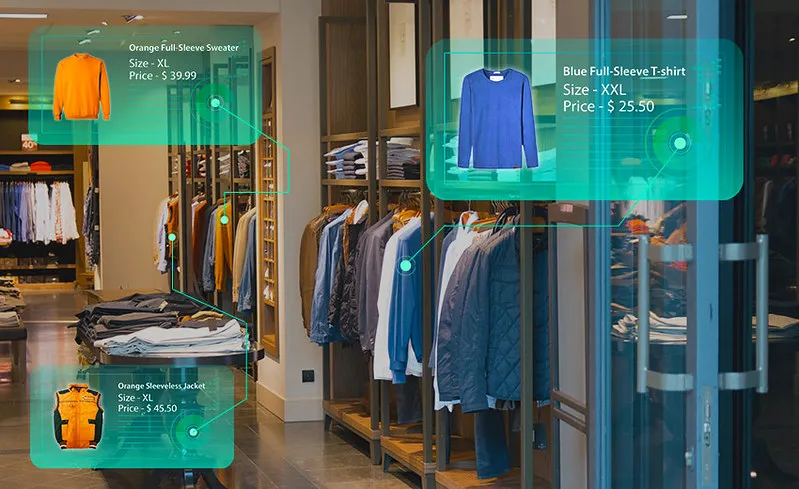

4 Crucial Business Use Cases of Augmented Reality Driving Adoption
Augmented Reality is beyond gaming, It has the potential to transform the customer experience, boosts sales and satisfaction. This breakthrough technology is here to stay and change the way businesses interact with customers.

Augmented Reality has come a long way from when it was developed for the first time in 1992 by the U.S Air Force. Gradually, AR is sliding to being a staple technology in the day-to-day lives of the modern world. The success of PokemonGo was the earliest AR inflexion point for commercial purpose. This made people aware of what AR is capable of when it comes to virtual objects interacting with the real world. The digital economy, courtesy AR app development is paving way for more uses.
Here’s the tentative AR growth forecast:
There must be something in Augmented Reality which pushes the great Fortune 500 companies globally to integrate AR into their product lines and even marketing at a rapid pace. Consider how Kia Motors and Audi are opting to experiment AR for motorists’ troubleshooting. They got away with paper manuals and instead allow motorists to get acquainted with features and troubleshoot issues by simply pointing their smartphone at the dashboard to know what leads the engine lights to glow or how the engine is structured internally to have users familiarize with its working.
These are the 5 use cases of Augmented Reality for the users to easily adopt and embrace this new technology.
1. Retail

Source: Deepak VS
Penetrating AR gets easy with smartphones becoming a norm. This enables businesses to design an ideal shopping experience for the buyers regardless of the business based online or running a brick-and-mortar store. Look how Marxent crafted an AR-driven application for the motorcycle brand Harley-Davidson to offer users unique virtual shopping experience. Such an app drives engagement and also makes it easy for users to adopt this as this gives them the space to experiment seats, body types, lights and another accessory to visually see how their custom bike design looks like.
For those companies who are only working in an e-commerce space can leverage AR for creating a 3-D shop. This is to give prospective buyers an opportunity to virtually experience the traditional buying. Allowing them to try before they buy leads to greater satisfaction and in turn, businesses can save grands by mitigating the chances of product returns. With plenty of options to choose from, traditional retailers can use AR to let customers try out their chosen garment quickly without using the changing room and thereby avoiding the changing room queues. While AR is yet to break into the market globally, MNCs operating store in developing nations can use AR campaigns to drive more customers to stores.
2. Manufacturing
Process simplification is rather a solution that every manufacturing companies look forward to. AR can help engineers by virtually training them for product assembly be it car, aeroplane or any other machinery. Running multiple training sessions with AR glasses on, engineers can quickly grasp new ways to work and tailor the required product by simply altering the accessories and spare parts as guided by AR glasses.
AR Technology moves beyond just manufacturing and training as factories can use it to drive predictive and preventive maintenance. This helps in two ways – cutting down maintenance cost and predicting machine failures and production bottlenecks with accuracy. Even for quality assurance, AR is a great asset for its ability to check errors almost instantly. It can send a real-time notification to engineers and suggested actions to take. This is important for companies associated with manufacturing big items like Trains, etc.
3. Marketing
AR, marketers can offer an immersive for prospective users to experience something new. This is a great way to let them know precisely what is being offered as this will have their maximum attention. For example, IKEA would let users get the app and try out furniture in their space before it out.
Brands across the globe are using AR to create a mesmerizing experience for prospective buyers. Like, even in the entertainment industry AMC Cinemas lets movie buffs to watch the trailer by putting their smartphones on film posters. With this, it also displays the cast and credits to let moviegoers decide whether or not to go for it. In case they are affirmative, they can book tickets thru their app.
4. Design and Modelling
AR app development companies can easily make augmented plugins for brands to let designers run virtual product mock-ups using their tablets or smartphones. This saves big brands from investing much into modelling costly prototypes. The AR experience allows split-screen comparisons of multiple products – old and new. This let designers mend their design accordingly while gauging their trajectory at the same time.
With AR-driven agility, client-side changes are simplified while enhancing their design understanding and proposed impact of newly crafted products. Bringing in AR technology early on can also help in product design early on allowing designers to get precise product view.
Conclusion:
Apart from these, there are plenty of enterprise-driven advantages of AR as it makes way for large teams to communicate freely thru multiple hands-free communication channels. Also, getting assistance in complex tasks is something that enterprise loves especially when it is accuracy-driven. Incorporating Smart glasses as a part of warehouse solution drives efficiency especially for pick and drop operations.





